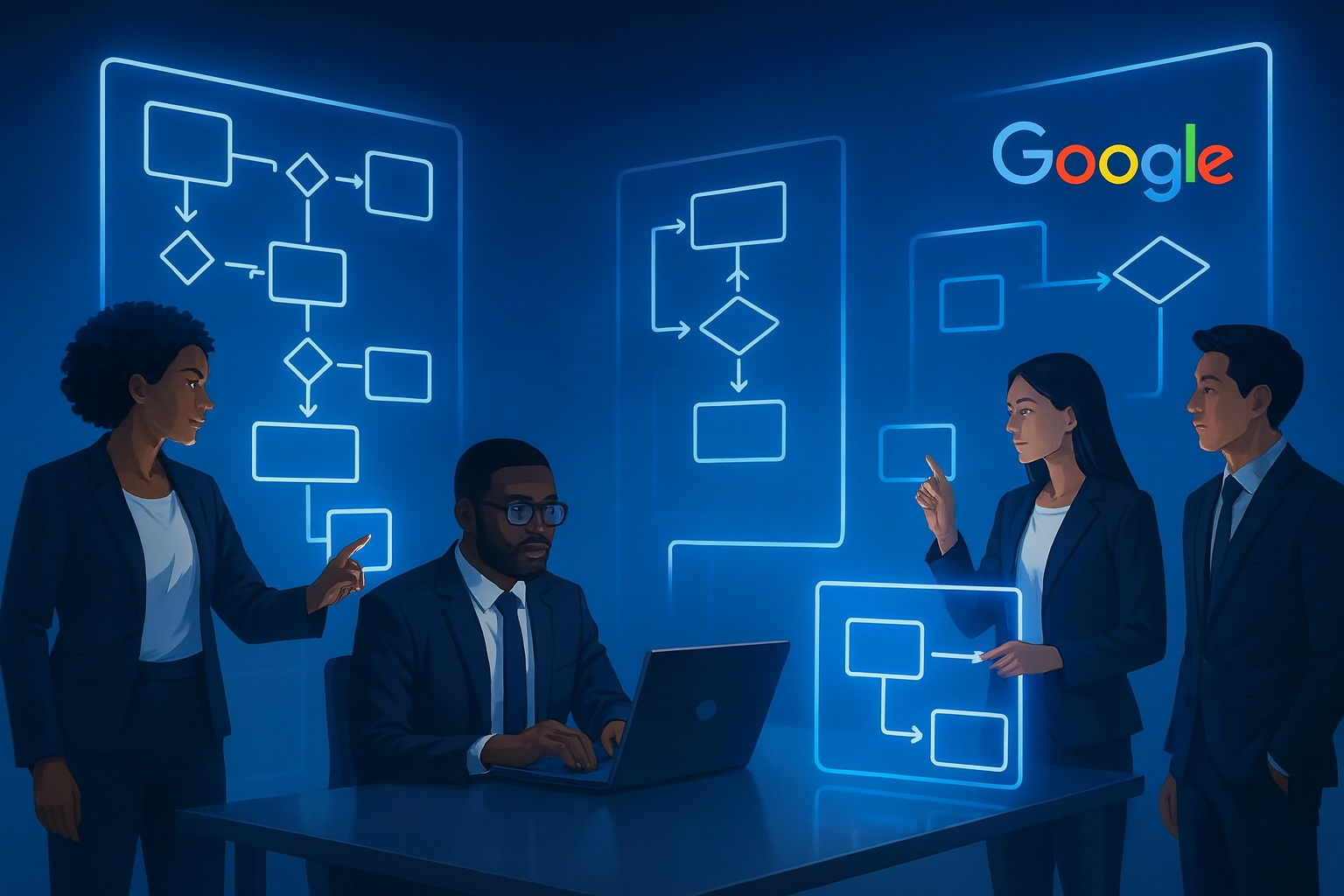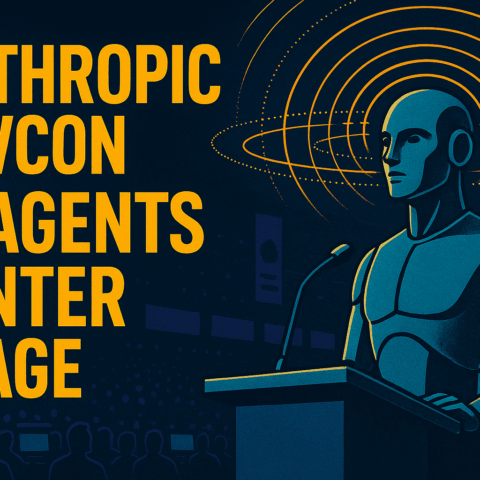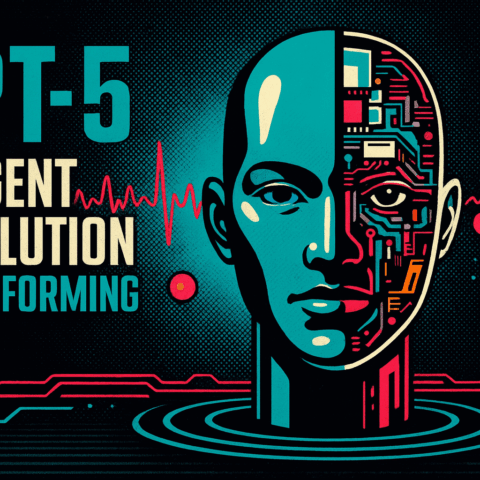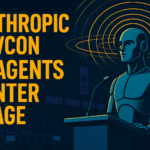The rise of artificial intelligence in software development
Google has fundamentally transformed its approach to software development through AI, with over 25% of all new code at the company now generated by artificial intelligence— blog +5a figure that has grown to 30% by early 2025. JetBrains +4 This internal revolution reflects a broader strategy that positions Google as a major force in the AI coding assistant market, challenging established players like GitHub Copilot through an integrated ecosystem of tools, generous free tiers, and cutting-edge autonomous coding agents. The company’s journey from experimental AI research to production-ready developer tools represents one of the most significant shifts in software development practices since the advent of integrated development environments.
The transformation began with foundational AI research dating back to 2001, when Google first applied machine learning to spell check in Search. Google AIai Through strategic acquisitions like DeepMind for $650 million in 2014 and the development of transformer architecture in 2017, Google built the technical foundation for today’s AI coding revolution. ai The 2023 merger of Google Brain and DeepMind under Demis Hassabis accelerated this progress, leading to breakthroughs like AlphaCode 2, which performs better than 85% of competitive programmers. aiCNBC Most recently, the December 2024 launch of Jules—an autonomous AI coding agent— Google Developersand the February 2025 introduction of Gemini Code Assist’s free tier with 180,000 monthly completions Google (90 times more than competitors) demonstrate Google’s aggressive push to capture developer mindshare. Google +2
Latest developments reshape the competitive landscape
Google’s 2024-2025 product launches reveal a comprehensive strategy to challenge Microsoft’s dominance in AI coding assistance. Jules, entering public beta in May 2025, represents a paradigm shift from code completion to autonomous development. Unlike traditional assistants that respond to prompts, Jules operates asynchronously in secure Google Cloud VMs, independently fixing bugs, creating tests, and submitting pull requests while developers focus on higher-level tasks. thenewstack The agent generates audio changelogs explaining its changes and can handle complex, multi-file code modifications powered by Gemini 2.5 Pro’s massive context windows. GoogleGoogle Developers
The July 2025 rebranding of Project IDX to Firebase Studio signals Google’s commitment to integrated development experiences. Firebase +2 This transformation brings Project IDX’s browser-based IDE capabilities directly into the Firebase ecosystem, Google adding multimodal prompting with images and drawing tools, an App Prototyping agent that generates full-stack Next.js applications from natural language, and automatic backend provisioning detection. googlegoogle The integration demonstrates Google’s vision of seamless cloud-native development where AI assistance is deeply embedded rather than added as an afterthought.
Perhaps most disruptive is the launch of Gemini Code Assist for individuals as a free competitor to GitHub Copilot. With 180,000 code completions per month compared to Copilot’s 2,000-completion free tier, Google has reset market expectations for accessibility. GoogleSubpila The individual tier includes full IDE integration, Google a 128,000 input token context window, and access to Gemini 2.0 models fine-tuned specifically for coding tasks. blog +3 This aggressive pricing strategy, combined with the July 2025 launch of the open-source Gemini CLI offering 1,000 daily requests free, positions Google as the most accessible option for individual developers and students. Google
Understanding Google’s AI coding product ecosystem
Google’s AI coding tools form three distinct but interconnected pillars serving different developer needs. Gemini Code Assist functions as the core IDE assistant, available in three tiers. GoogleGoogle Cloud The free individual tier offers comprehensive features for personal Gmail accounts, Google while the Standard edition ($19/user/month) adds enterprise security and Google Cloud integration. TechTarget The Enterprise edition ($45/user/month with annual commitment) includes private codebase training, VPC Service Controls, and productivity metrics dashboards. Google Cloud All editions support 22 programming languages and integrate with VS Code, JetBrains IDEs, and Android Studio. Medium +7
Firebase Studio (formerly Project IDX) revolutionizes cloud-based development through a complete browser-accessible environment. Project IDX Built on Code OSS with Google Cloud Workstations backend, it provides full Linux VMs with terminal access, Firebase Studio integrated web/Android/iOS previews, and real-time collaboration features Firebase Studio reminiscent of Google Docs. Project IDXFirebase Studio The platform supports 60+ official templates covering popular frameworks from React to Flutter, with specialized AI assistance for Firebase service integration and full-stack application development. Google Developers +2
AI Studio serves as the experimentation and prototyping layer, providing direct access to Gemini models for developers exploring AI integration. It offers multiple prompt types including chat, structured, and multimodal inputs, with the ability to adjust model parameters, safety settings, and temperature controls. Google AI The platform’s “Get Code” feature generates production-ready implementations in multiple languages, while native integration with Vertex AI enables seamless transition from prototype to production deployment. blogGoogle AI
Additional specialized tools extend Google’s AI coding capabilities across specific domains. Codey, built on PaLM 2’s 540 billion parameters, powers Google Colab and provides specialized assistance for data science workflows. Analytics Vidhya +5 Android Studio’s Gemini integration includes Agent Mode for complex multi-stage tasks, UI acceleration that converts wireframes to Compose code, and crash analysis through App Quality Insights. Google The ecosystem is unified through common Gemini models, ensuring consistent performance and capabilities across all tools.
The strategic journey into AI-powered development
Google’s entry into AI coding emerged from multiple converging factors. The November 2022 launch of ChatGPT created urgent competitive pressure, while Microsoft’s GitHub Copilot integration threatened Google’s developer ecosystem. CEO Sundar Pichai revealed that internal productivity gains drove adoption, stating “Today, more than a quarter of all new code at Google is generated by AI, then reviewed and accepted by engineers.” VKTR +5 This internal success, where Google’s “Goose” tool achieved 60% adoption among developers with 37% acceptance rates for suggestions, validated the technology’s potential. MediumGoogle Research
The strategic importance extends beyond productivity to Google Cloud’s growth strategy. Cloud revenue reached $11.4 billion in Q3 2024, growing 35% year-over-year largely driven by AI adoption. Ubby +3 By offering AI coding tools through Vertex AI and integrating them deeply with Google Cloud services, the company creates a compelling ecosystem that drives platform adoption. Thomas Kurian, CEO of Google Cloud, noted that “more than 60% of funded generative AI startups, and nearly 90% of gen AI unicorns are Google Cloud customers,” demonstrating the platform’s appeal to AI-focused developers. Google Cloud +2
Competition with Microsoft shapes many strategic decisions. While GitHub Copilot claims 15+ million users and deep Visual Studio Code integration, Google counters with technical advantages like 2 million token context windows (the industry’s largest), specialized models like AlphaCode 2 for competitive programming, Google and the ambitious Jules autonomous agent. Klizos +2 The multi-model approach, where GitHub now offers Gemini as an alternative to OpenAI models, shows Google successfully penetrating Microsoft’s ecosystem while building its own developer community. The New StackCNBC
Real-world impact demonstrates transformative potential
Enterprise adoption reveals substantial productivity gains across diverse industries. Wayfair reported remarkable improvements with Gemini Code Assist, achieving 55% faster environment setup, 48% increase in unit test coverage, and 60% of developers focusing on more satisfying work. Google CloudGoogle Cloud CTO Fiona Tan emphasized that improvements came “across the spectrum,” indicating comprehensive workflow enhancement rather than isolated benefits.
Sumitomo Rubber Industries achieved even more dramatic results, reducing development tasks from 6 months to minutes using Cloud Workstations with Gemini Code Assist. The company successfully converted MATLAB programs to Python and significantly reduced training time for new developers. Director Masaya Tsunoda highlighted the democratizing effect: “if all of our members develop applications using generative AI, we will be able to not only improve work efficiency, but also provide more new services to our customers.” Google Cloudgoogle
Individual developer experiences reveal both enthusiasm and challenges. Professional reviews praise the extensive language support and Google Cloud integration while noting speed concerns compared to GitHub Copilot. One developer shared: “I hit a roadblock with a tricky API integration. In my usual setup, this would have meant hours of Googling and Stack Overflow diving. With IDX, I simply opened the built-in AI assistant, described my problem, and voila! It provided me with a working code snippet and a clear explanation.” Ai Review However, others report issues with context understanding and a tendency to suggest previously deleted code, indicating room for improvement in the AI’s comprehension of developer intent.
Market dynamics reveal shifting competitive landscape
Statistical analysis shows Google gaining ground in a rapidly expanding market valued at $4.91 billion in 2024 and projected to reach $30.1 billion by 2032. Verified Market Research While GitHub Copilot maintains market leadership with 41% developer usage, Google Gemini has captured 24% market share as a newer entrant. LogisticsitStack Overflow The JetBrains Developer Survey reveals adoption patterns: GitHub Copilot achieves 64.5% retention among trial users, while Google Gemini/Bard shows 37.6% adoption, indicating strong interest but room for improvement in user satisfaction. DEVCLASS
Google’s aggressive free tier strategy disrupts traditional pricing models. Offering 180,000 monthly completions free compared to competitors’ limited tiers targets individual developers and students who might become long-term users. Google Ryan Salva, Director of Product Management, explained: “By offering a free AI coding assistant with very high usage caps, Google hopes to steer developers early in their careers toward Code Assist.” TechCrunchThe New Stack This approach mirrors successful strategies in other Google products like Gmail and Chrome.
Performance benchmarks reveal a complex competitive landscape. Apply Digital’s comparative analysis found GitHub Copilot “most reliable and comprehensive” with minimal hallucinations, while Gemini Code Assist showed “more susceptibility to hallucinations” but demonstrated strong potential. Medium Google’s advantage lies in its 2 million token context window for understanding large codebases TechCrunch and the “mixture of agents” approach with specialized roles for developer, tester, and security analyst tasks. Medium Speed remains a consistent concern, with multiple reviewers noting Gemini’s slower response times compared to Copilot’s optimized real-time suggestions. InfoWorld
Technical capabilities showcase innovation and challenges
Google’s AI coding tools demonstrate both breakthrough capabilities and areas requiring refinement. The Gemini 2.5 models powering current tools show state-of-the-art performance on coding benchmarks, with Jules achieving 51.8% success rate on SWE-bench Verified real-world software engineering tasks. Google Developers +3 The massive context windows—up to 2 million tokens for enterprise customers—enable understanding of entire codebases, a significant advantage for large-scale refactoring and architectural changes. Medium +4
Integration depth distinguishes Google’s ecosystem. Gemini Code Assist Enterprise offers private codebase training, allowing organizations to customize AI assistance based on internal coding standards and patterns. GoogleMedium VPC Service Controls and Private Google Access ensure security for sensitive codebases, while automatic source citations address licensing concerns. Google +4 The integration extends across Google’s stack: BigQuery for SQL generation, Cloud Build for CI/CD, Vertex AI for model deployment, and Firebase for application development.
However, technical limitations persist. Response latency remains problematic, with developers reporting noticeable delays compared to GitHub Copilot’s near-instantaneous suggestions. Subpila Hallucination rates, particularly for less common libraries or frameworks, exceed those of competitors. InfoWorld The models sometimes struggle with project-wide context, suggesting incompatible code patterns or reverting refactored code. These challenges reflect the inherent tension between model sophistication and practical usability in real-time development workflows.
Controversies highlight broader industry challenges
Legal and ethical concerns shadow the entire AI coding industry. Google faces multiple copyright lawsuits for training models on copyrighted data, with cases like Zhang v Google LLC challenging the use of datasets containing protected works. InfoWorldBallard Spahr The company has lobbied for broad “fair use and text-and-data mining exceptions,” arguing that licensing requirements would stifle innovation. TechCrunch A comprehensive study of 574 developers revealed widespread confusion about AI-generated code ownership: 43.7% believe it should be public domain, while only 28.2% think rights belong to original training data creators. arXiv
Technical debt emerges as an unexpected consequence of AI adoption. GitClear’s analysis of 211 million lines of code found copy-pasted code increased from 1.8% in 2023 to 6.6% in 2024—an eightfold increase in duplicated code blocks. Google’s own 2024 DORA report revealed that 25% increase in AI usage leads to 7.2% decrease in delivery stability. Google Cloud Bill Harding, CEO of GitClear, warned of “unprecedented technical debt being created,” while API evangelist Kin Lane stated he had “never seen so much technical debt being created in such a short period” in his 35-year career.
Privacy concerns vary between user tiers. Gemini retains conversations for up to 18 months, with human reviewers analyzing interactions for quality improvement. SlashGear While enterprise editions offer stateless services without data retention, individual developers have fewer protections. Google Cloud The inconsistent privacy policies across Google’s AI products create confusion, with developers expressing concerns about proprietary code exposure and inadvertent inclusion of sensitive information in prompts.
Industry transformation extends beyond productivity metrics
The software development profession faces fundamental changes as AI coding tools proliferate. Reports indicate 30% of coding jobs at major tech companies are now AI-automated, though most experts predict transformation rather than wholesale replacement. Outsourceaccelerator +3 New roles emerge: AI Integration Specialists, prompt engineers, and AI-human collaboration experts. Companies like Visa and DoorDash explicitly require AI tool experience in job postings, making “vibe coding”—Andrej Karpathy’s term for AI-assisted development—an essential skill. Theoutpost +2
Educational institutions struggle to adapt curricula to this new reality. Google has invested $263 million in computing education equity, with programs like CS First reaching 40 million students annually. grow However, educators worry about students becoming overly dependent on AI without understanding fundamental concepts. The generational divide grows as experienced developers express concern about junior colleagues who can’t debug without AI assistance, while younger developers view AI tools as natural extensions of their development environment.
The economic implications ripple through the industry. By 2025, CISQ estimates 40% of IT budgets will address technical debt maintenance, with average remediation costs of $3.60 per line. Stanford Smaller companies face disadvantages as enterprise-grade AI tools require significant investment. The open-source ecosystem faces disruption as developers turn to AI assistants instead of community forums, potentially reducing contributions and collaborative learning that historically drove innovation.
Future trajectories point toward autonomous development
Google’s roadmap reveals ambitious plans for autonomous coding systems. The 2025 focus on “world model” capabilities—AI that can plan and simulate real-world scenarios—suggests movement beyond code completion to genuine software architecture and design. Gemini 2.5’s Deep Think mode for complex reasoning, combined with computer use APIs for web automation, hints at AI systems capable of entire development workflows from requirements to deployment. Google +6
Educational initiatives scale to meet changing industry needs. The Google Developer Program’s tiered structure, from free access with AI-powered documentation to premium subscriptions with certification vouchers and expert consultations, creates pathways for developers at all levels. GoogleGoogle Partnerships with Coursera integrate AI training into all certificate programs, while specialized courses on prompt engineering and responsible AI use address emerging skill requirements. grow
Open-source contributions balance commercial interests. The Gemma model family, with variants from 1B to 27B parameters, demonstrates Google’s commitment to accessible AI technology. With over 100 million downloads and 60,000 community-created variants, Gemma provides alternatives to proprietary models. Google +3 The Apache 2.0 licensed Gemini CLI further democratizes access, offering 1,000 daily requests free—setting new standards for open-source AI tool accessibility. blogGoogle
Navigating the transformation responsibly
Google’s AI coding revolution represents both tremendous opportunity and significant risk for software development. The tools offer undeniable productivity benefits: 55% faster development at Wayfair, 6-month tasks compressed to minutes at Sumitomo Rubber, and 25-30% of Google’s own code now AI-generated. The generous free tiers democratize access, while enterprise features address security and customization needs of large organizations. Google
Yet challenges demand atención. Technical debt accumulates at unprecedented rates, with copy-pasted code increasing eightfold. Legal uncertainties around copyright and ownership remain unresolved. The risk of developer deskilling looms as AI handles increasingly complex tasks. Privacy concerns and inconsistent policies across products create compliance challenges. Most fundamentally, the industry must determine how to maintain code quality and architectural integrity while embracing AI-accelerated development.
Success in this new landscape requires balanced adoption strategies. Organizations must implement robust code review processes adapted for AI-generated code, invest in developer education that emphasizes both AI collaboration and fundamental skills, and establish clear policies around AI tool usage and compliance. Stack Overflow +2 Individual developers need to view AI as a powerful collaborator rather than a replacement, maintaining critical thinking about AI suggestions while leveraging productivity benefits. The evidence suggests that rather than replacing developers, AI coding tools are fundamentally redefining the profession—shifting emphasis from implementation to architecture, from individual coding to AI orchestration, and from traditional debugging to AI-assisted problem-solving. Stack Overflow Google’s comprehensive ecosystem positions the company as both a technology leader and catalyst for this industry-wide transformation.



![Meta's $300 million gamble reshapes the AI talent wars Meta has launched the most aggressive talent acquisition campaign in technology history, offering individual compensation packages up to $300 million over four years to elite AI researchers. CNBC +7 This unprecedented strategy, coupled with $60-65 billion in infrastructure investments for 2025, represents Mark Zuckerberg's all-in bet to transform Meta from an AI follower into the leader in the race toward superintelligence. Data Center Dynamics +5 The campaign has successfully recruited dozens of top researchers from OpenAI, Google DeepMind, and Apple, while fundamentally disrupting compensation norms across the entire AI industry and raising critical questions about talent concentration and the future of AI development. CNBC +8 The $300 million figure decoded: Individual packages, not aggregate spending The widely reported "$300 million AI brain drain" figure represents individual compensation packages for elite AI researchers over four-year periods, not Meta's total spending on talent acquisition. Gizmodo +3 According to Fortune's July 2025 reporting, "Top-tier AI researchers at Meta are reportedly being offered total compensation packages of up to $300 million over four years, with some initial year earnings exceeding $100 million." Fortune Yahoo Finance These packages primarily consist of restricted stock units (RSUs) with immediate vesting, rather than traditional signing bonuses, as Meta CTO Andrew Bosworth clarified: "the actual terms of the offer wasn't a sign-on bonus. It's all these different things." CNBC +2 The compensation structure includes base salaries up to $480,000 for software engineers and $440,000 for research engineers, Fortune supplemented by massive equity grants and performance bonuses. Fortune SmythOS Specific examples include Ruoming Pang from Apple receiving $200+ million over several years Fortune and Alexandr Wang from Scale AI receiving $100+ million as part of Meta's $14.3 billion investment in Scale AI. Fortune +3 OpenAI CEO Sam Altman confirmed these figures on the "Uncapped" podcast, stating Meta made "giant offers to a lot of people on our team, you know, like $100 million signing bonuses, more than that (in) compensation per year." CNBC +6 This compensation strategy emerged after Meta's Llama 4 model underperformed expectations in April 2025, prompting Zuckerberg to take personal control of recruitment. CNBC +3 The CEO maintains a "literal list" of 50-100 elite AI professionals he's targeting, making direct phone calls to recruit them. Fortune +5 While not every hire receives nine-figure packages—typical offers range from $10-18 million annually—the peak compensation levels have redefined industry standards and forced competitors to dramatically increase their retention spending. TechCrunch Meta raids the AI elite: Key acquisitions from competitors Meta's talent acquisition campaign has systematically targeted the architects of competitors' most successful AI models, with particular focus on researchers with expertise in reasoning models, multimodal AI, and foundation model training. SmythOS Fortune The company has successfully recruited 11+ researchers from OpenAI, including several co-creators of ChatGPT and the o-series reasoning models. South China Morning Post +4 Notable acquisitions include Shengjia Zhao, named Chief Scientist of Meta Superintelligence Labs in July 2025, who co-created ChatGPT, GPT-4, and all mini models; CNN Trapit Bansal, a key contributor to OpenAI's o1 reasoning model who pioneered reinforcement learning approaches; TechCrunch TechCrunch and Hongyu Ren, co-creator of GPT-4o, o1-mini, and o3. CNBC +2 From Google DeepMind, Meta secured Jack Rae, the pre-training tech lead for Gemini who also led development of Gopher and Chinchilla; Pei Sun, who led post-training, coding, and reasoning for Gemini after creating Waymo's perception models; Fortune CNBC and multiple other Gemini contributors. CNBC Silicon UK The Apple raid centered on Ruoming Pang, head of Apple's AI foundation models team who led Apple Intelligence development, along with three senior team members including distinguished engineer Tom Gunter. MacDailyNews +4 These acquisitions follow a clear strategic pattern: Meta is targeting researchers with proven expertise in areas where it has fallen behind, particularly reasoning models and multimodal AI. SmythOS The recruits often move as cohesive teams—for instance, the OpenAI Zurich office researchers Lucas Beyer, Alexander Kolesnikov, and Xiaohua Zhai all joined Meta together. TechCrunch TechCrunch This team-based approach accelerates Meta's ability to replicate successful research methodologies while disrupting competitors' ongoing projects. The talent flow has created significant disruption at source companies. OpenAI's Chief Research Officer Mark Chen described the exodus in an internal memo: "I feel a visceral feeling right now, as if someone has broken into our home and stolen something." Yahoo! +2 Apple's AI strategy faced major setbacks after losing its foundation models leadership, forcing a reorganization under Craig Federighi and Mike Rockwell. MacRumors Superintelligence ambitions drive massive infrastructure buildout Meta's creation of the Meta Superintelligence Labs (MSL) in June 2025 represents a fundamental reorganization of its AI efforts under unified leadership. Led by Alexandr Wang as Chief AI Officer and Nat Friedman heading AI products and applied research, MSL consolidates all AI research with the explicit goal of achieving "personal superintelligence for everyone." CNBC +2 Zuckerberg's internal memo declared: "As the pace of AI progress accelerates, developing superintelligence is coming into sight. I believe this will be the beginning of a new era for humanity." CNBC +2 The infrastructure investments supporting this ambition dwarf anything previously attempted in corporate AI research. Meta committed $60-65 billion for 2025 alone, representing a 50% increase from 2024, with plans for "hundreds of billions of dollars" in coming years. Data Center Dynamics +7 The company is constructing two revolutionary data centers that abandon traditional designs for speed-focused "tent" infrastructure. The Prometheus Cluster in Ohio will provide 1 gigawatt of capacity by 2026, featuring on-site natural gas generation through two 200MW plants to bypass grid limitations. The Hyperion Cluster in Louisiana represents an even more ambitious undertaking: a 2GW facility scaling to 5GW, covering an area "the size of most of Manhattan" with a $10 billion investment on 2,250 acres. Opportunity Louisiana +5 Meta's technical infrastructure includes 1.3+ million GPUs targeted by end of 2025, utilizing prefabricated power and cooling modules for rapid deployment and sophisticated workload management to maximize utilization. PYMNTS +3 The company has shifted its research focus from traditional AGI to what Chief AI Scientist Yann LeCun calls "Advanced Machine Intelligence" (AMI), arguing that human intelligence is specialized rather than generalized. Columbia Engineering AI Business Current research priorities span computer vision (Perception Encoder, Meta Locate 3D), foundation models (continued Llama development despite setbacks), world models for predicting action outcomes, and collaborative AI for multi-agent reasoning. Meta meta The Llama 4 "Behemoth" model's failure—attributed to chunked attention creating blind spots and economically unviable inference—led to a strategic pivot toward smaller, more efficient variants while the new superintelligence team addresses fundamental research gaps. CNBC +4 The talent war escalates: Compensation packages reach athlete-level extremes The AI talent war has created compensation dynamics unprecedented in technology history, with packages now exceeding those of professional athletes and Wall Street executives. Meta's aggressive offers have forced industry-wide salary inflation, with typical AI researcher packages at major labs now ranging from $2-10 million annually. Ainvest +4 OpenAI responded to defections by jumping stock compensation 5x to $4.4 billion company-wide, offering $2+ million retention bonuses with one-year commitments and $20+ million equity deals to prevent key departures. Fortune +3 Despite Meta's financial firepower, retention data reveals that money alone doesn't guarantee loyalty. Meta maintains only a 64% retention rate, the lowest among major AI labs, while experiencing 4.3% annual attrition to competitors. SmythOS The Register In contrast, Anthropic achieves an 80% retention rate with more modest compensation ($311K-$643K range) by emphasizing mission-driven culture and researcher autonomy. The Register +6 The data shows an 8:1 ratio of OpenAI departures favoring Anthropic over the reverse, suggesting that purpose and product quality matter as much as pay. signalfire Analytics India Magazine The compensation arms race extends beyond individual packages to strategic "acqui-hires." Google executed a $2 billion deal to bring back Noam Shazeer and the Character.AI team, while Microsoft absorbed most of Inflection AI for $650 million. Fortune Fortune These deals allow companies to acquire entire teams while potentially avoiding regulatory scrutiny of traditional acquisitions. Geographic concentration intensifies the competition, with 65% of AI engineers located in San Francisco and New York. signalfire However, emerging hubs like Miami (+12% AI roles) and San Diego (+7% Big Tech roles) are beginning to attract talent with compensation at 83-90% of Bay Area levels. Fortune The elite talent pool remains extremely constrained, with experts estimating only 2,000 people worldwide capable of frontier AI research, driving the extreme premiums for proven expertise. The Register Fortune Industry experts divided on Meta's bold strategy Industry analysis reveals deep divisions about Meta's approach and its implications for AI development. SemiAnalysis characterizes the compensation packages as making "top athlete pay look like chump change," with typical offers of "$200M to $300M per researcher for 4 years" representing "100x that of their peers." CFRA analyst Angelo Zino views the acquisitions as necessary long-term investments: "You need those people on board now and to invest aggressively to be ready for that phase of generative AI development." Yahoo! CNBC Academic researchers express concern about the broader implications. MIT's Neil Thompson and Nur Ahmed warn that by 2020, "nearly 70% of AI Ph.D. holders were recruited by industry, up from only 21% in 2004," creating a troubling brain drain that "leaves fewer academic researchers to train the next generation." MIT Sloan Brookings They argue this concentration could "push to the sidelines work that's in the public interest but not particularly profitable," including research on AI bias, equity, and public health applications. MIT Sloan Competitors have responded with varying strategies. Google relies on personal intervention from leadership, with co-founder Sergey Brin "personally calling an employee and offering them a pay rise to stay," while maintaining advantages in computing power and proprietary chips. Fortune +2 Microsoft has "tied its AI fate to OpenAI" while building in-house capabilities, even reviving the Three Mile Island nuclear plant to power AI operations. PYMNTS OpenAI faces the most direct impact, with Sam Altman criticizing Meta's approach as "distasteful" and arguing that "missionaries will beat mercenaries." CNBC +6 The venture capital community sees Meta's strategy accelerating market consolidation. HSBC Innovation Banking reports that "42% of U.S. venture capital was invested into AI companies in 2024," EY with compensation inflation making it increasingly difficult for startups to compete. Menlo Ventures' Tim Tully notes that "Stock grants for these scientists can range between $2 million to $4 million at a Series D startup. That was unfathomable when I was hiring research scientists four years ago." Fortune Policy experts worry about innovation concentration. The Brookings Institution recommends "direct support to keep [academic researchers] from leaving for industry" and "more open immigration policies" to broaden the talent pool. Brookings Some propose international collaboration similar to CERN to ensure more distributed AI development and prevent unhealthy concentration of capabilities in a few corporations. MIT Sloan Conclusion Meta's $300 million talent acquisition gambit represents more than aggressive recruitment—it's a fundamental bet that concentrating elite AI talent through unprecedented compensation can overcome technical disadvantages and establish superintelligence leadership. Early results show mixed success: while Meta has successfully recruited dozens of top researchers and committed massive infrastructure investments, the company still faces the lowest retention rate among major AI labs and continued technical challenges with its foundation models. The Register +2 The strategy has irrevocably transformed the AI talent landscape, normalizing eight and nine-figure compensation packages while accelerating the concentration of expertise in a handful of well-funded laboratories. Fortune Axios This concentration may accelerate progress toward AGI but raises critical questions about research diversity, academic sustainability, and the public interest in AI development. As one MIT researcher noted, industry benchmarks now drive the entire field's research agenda, potentially sidelining work on bias, equity, and public applications. Meta's ultimate success will depend not just on financial resources but on its ability to create a mission-driven culture that retains talent and translates unprecedented human capital investment into breakthrough capabilities. Computerworld +2 With competitors matching compensation while maintaining advantages in culture (Anthropic), infrastructure (Google), or partnerships (Microsoft), Meta's superintelligence ambitions face significant challenges despite unlimited financial backing. The Register The AI talent wars have entered a new phase where money is necessary but insufficient—and where the concentration of capabilities in corporate hands may fundamentally reshape not just the industry but the trajectory of human technological development.](https://news.envychip.com/wp-content/uploads/2025/07/Gwum3dibgAYIuX--1024x683.jpeg)



![Meta's $300 million gamble reshapes the AI talent wars Meta has launched the most aggressive talent acquisition campaign in technology history, offering individual compensation packages up to $300 million over four years to elite AI researchers. CNBC +7 This unprecedented strategy, coupled with $60-65 billion in infrastructure investments for 2025, represents Mark Zuckerberg's all-in bet to transform Meta from an AI follower into the leader in the race toward superintelligence. Data Center Dynamics +5 The campaign has successfully recruited dozens of top researchers from OpenAI, Google DeepMind, and Apple, while fundamentally disrupting compensation norms across the entire AI industry and raising critical questions about talent concentration and the future of AI development. CNBC +8 The $300 million figure decoded: Individual packages, not aggregate spending The widely reported "$300 million AI brain drain" figure represents individual compensation packages for elite AI researchers over four-year periods, not Meta's total spending on talent acquisition. Gizmodo +3 According to Fortune's July 2025 reporting, "Top-tier AI researchers at Meta are reportedly being offered total compensation packages of up to $300 million over four years, with some initial year earnings exceeding $100 million." Fortune Yahoo Finance These packages primarily consist of restricted stock units (RSUs) with immediate vesting, rather than traditional signing bonuses, as Meta CTO Andrew Bosworth clarified: "the actual terms of the offer wasn't a sign-on bonus. It's all these different things." CNBC +2 The compensation structure includes base salaries up to $480,000 for software engineers and $440,000 for research engineers, Fortune supplemented by massive equity grants and performance bonuses. Fortune SmythOS Specific examples include Ruoming Pang from Apple receiving $200+ million over several years Fortune and Alexandr Wang from Scale AI receiving $100+ million as part of Meta's $14.3 billion investment in Scale AI. Fortune +3 OpenAI CEO Sam Altman confirmed these figures on the "Uncapped" podcast, stating Meta made "giant offers to a lot of people on our team, you know, like $100 million signing bonuses, more than that (in) compensation per year." CNBC +6 This compensation strategy emerged after Meta's Llama 4 model underperformed expectations in April 2025, prompting Zuckerberg to take personal control of recruitment. CNBC +3 The CEO maintains a "literal list" of 50-100 elite AI professionals he's targeting, making direct phone calls to recruit them. Fortune +5 While not every hire receives nine-figure packages—typical offers range from $10-18 million annually—the peak compensation levels have redefined industry standards and forced competitors to dramatically increase their retention spending. TechCrunch Meta raids the AI elite: Key acquisitions from competitors Meta's talent acquisition campaign has systematically targeted the architects of competitors' most successful AI models, with particular focus on researchers with expertise in reasoning models, multimodal AI, and foundation model training. SmythOS Fortune The company has successfully recruited 11+ researchers from OpenAI, including several co-creators of ChatGPT and the o-series reasoning models. South China Morning Post +4 Notable acquisitions include Shengjia Zhao, named Chief Scientist of Meta Superintelligence Labs in July 2025, who co-created ChatGPT, GPT-4, and all mini models; CNN Trapit Bansal, a key contributor to OpenAI's o1 reasoning model who pioneered reinforcement learning approaches; TechCrunch TechCrunch and Hongyu Ren, co-creator of GPT-4o, o1-mini, and o3. CNBC +2 From Google DeepMind, Meta secured Jack Rae, the pre-training tech lead for Gemini who also led development of Gopher and Chinchilla; Pei Sun, who led post-training, coding, and reasoning for Gemini after creating Waymo's perception models; Fortune CNBC and multiple other Gemini contributors. CNBC Silicon UK The Apple raid centered on Ruoming Pang, head of Apple's AI foundation models team who led Apple Intelligence development, along with three senior team members including distinguished engineer Tom Gunter. MacDailyNews +4 These acquisitions follow a clear strategic pattern: Meta is targeting researchers with proven expertise in areas where it has fallen behind, particularly reasoning models and multimodal AI. SmythOS The recruits often move as cohesive teams—for instance, the OpenAI Zurich office researchers Lucas Beyer, Alexander Kolesnikov, and Xiaohua Zhai all joined Meta together. TechCrunch TechCrunch This team-based approach accelerates Meta's ability to replicate successful research methodologies while disrupting competitors' ongoing projects. The talent flow has created significant disruption at source companies. OpenAI's Chief Research Officer Mark Chen described the exodus in an internal memo: "I feel a visceral feeling right now, as if someone has broken into our home and stolen something." Yahoo! +2 Apple's AI strategy faced major setbacks after losing its foundation models leadership, forcing a reorganization under Craig Federighi and Mike Rockwell. MacRumors Superintelligence ambitions drive massive infrastructure buildout Meta's creation of the Meta Superintelligence Labs (MSL) in June 2025 represents a fundamental reorganization of its AI efforts under unified leadership. Led by Alexandr Wang as Chief AI Officer and Nat Friedman heading AI products and applied research, MSL consolidates all AI research with the explicit goal of achieving "personal superintelligence for everyone." CNBC +2 Zuckerberg's internal memo declared: "As the pace of AI progress accelerates, developing superintelligence is coming into sight. I believe this will be the beginning of a new era for humanity." CNBC +2 The infrastructure investments supporting this ambition dwarf anything previously attempted in corporate AI research. Meta committed $60-65 billion for 2025 alone, representing a 50% increase from 2024, with plans for "hundreds of billions of dollars" in coming years. Data Center Dynamics +7 The company is constructing two revolutionary data centers that abandon traditional designs for speed-focused "tent" infrastructure. The Prometheus Cluster in Ohio will provide 1 gigawatt of capacity by 2026, featuring on-site natural gas generation through two 200MW plants to bypass grid limitations. The Hyperion Cluster in Louisiana represents an even more ambitious undertaking: a 2GW facility scaling to 5GW, covering an area "the size of most of Manhattan" with a $10 billion investment on 2,250 acres. Opportunity Louisiana +5 Meta's technical infrastructure includes 1.3+ million GPUs targeted by end of 2025, utilizing prefabricated power and cooling modules for rapid deployment and sophisticated workload management to maximize utilization. PYMNTS +3 The company has shifted its research focus from traditional AGI to what Chief AI Scientist Yann LeCun calls "Advanced Machine Intelligence" (AMI), arguing that human intelligence is specialized rather than generalized. Columbia Engineering AI Business Current research priorities span computer vision (Perception Encoder, Meta Locate 3D), foundation models (continued Llama development despite setbacks), world models for predicting action outcomes, and collaborative AI for multi-agent reasoning. Meta meta The Llama 4 "Behemoth" model's failure—attributed to chunked attention creating blind spots and economically unviable inference—led to a strategic pivot toward smaller, more efficient variants while the new superintelligence team addresses fundamental research gaps. CNBC +4 The talent war escalates: Compensation packages reach athlete-level extremes The AI talent war has created compensation dynamics unprecedented in technology history, with packages now exceeding those of professional athletes and Wall Street executives. Meta's aggressive offers have forced industry-wide salary inflation, with typical AI researcher packages at major labs now ranging from $2-10 million annually. Ainvest +4 OpenAI responded to defections by jumping stock compensation 5x to $4.4 billion company-wide, offering $2+ million retention bonuses with one-year commitments and $20+ million equity deals to prevent key departures. Fortune +3 Despite Meta's financial firepower, retention data reveals that money alone doesn't guarantee loyalty. Meta maintains only a 64% retention rate, the lowest among major AI labs, while experiencing 4.3% annual attrition to competitors. SmythOS The Register In contrast, Anthropic achieves an 80% retention rate with more modest compensation ($311K-$643K range) by emphasizing mission-driven culture and researcher autonomy. The Register +6 The data shows an 8:1 ratio of OpenAI departures favoring Anthropic over the reverse, suggesting that purpose and product quality matter as much as pay. signalfire Analytics India Magazine The compensation arms race extends beyond individual packages to strategic "acqui-hires." Google executed a $2 billion deal to bring back Noam Shazeer and the Character.AI team, while Microsoft absorbed most of Inflection AI for $650 million. Fortune Fortune These deals allow companies to acquire entire teams while potentially avoiding regulatory scrutiny of traditional acquisitions. Geographic concentration intensifies the competition, with 65% of AI engineers located in San Francisco and New York. signalfire However, emerging hubs like Miami (+12% AI roles) and San Diego (+7% Big Tech roles) are beginning to attract talent with compensation at 83-90% of Bay Area levels. Fortune The elite talent pool remains extremely constrained, with experts estimating only 2,000 people worldwide capable of frontier AI research, driving the extreme premiums for proven expertise. The Register Fortune Industry experts divided on Meta's bold strategy Industry analysis reveals deep divisions about Meta's approach and its implications for AI development. SemiAnalysis characterizes the compensation packages as making "top athlete pay look like chump change," with typical offers of "$200M to $300M per researcher for 4 years" representing "100x that of their peers." CFRA analyst Angelo Zino views the acquisitions as necessary long-term investments: "You need those people on board now and to invest aggressively to be ready for that phase of generative AI development." Yahoo! CNBC Academic researchers express concern about the broader implications. MIT's Neil Thompson and Nur Ahmed warn that by 2020, "nearly 70% of AI Ph.D. holders were recruited by industry, up from only 21% in 2004," creating a troubling brain drain that "leaves fewer academic researchers to train the next generation." MIT Sloan Brookings They argue this concentration could "push to the sidelines work that's in the public interest but not particularly profitable," including research on AI bias, equity, and public health applications. MIT Sloan Competitors have responded with varying strategies. Google relies on personal intervention from leadership, with co-founder Sergey Brin "personally calling an employee and offering them a pay rise to stay," while maintaining advantages in computing power and proprietary chips. Fortune +2 Microsoft has "tied its AI fate to OpenAI" while building in-house capabilities, even reviving the Three Mile Island nuclear plant to power AI operations. PYMNTS OpenAI faces the most direct impact, with Sam Altman criticizing Meta's approach as "distasteful" and arguing that "missionaries will beat mercenaries." CNBC +6 The venture capital community sees Meta's strategy accelerating market consolidation. HSBC Innovation Banking reports that "42% of U.S. venture capital was invested into AI companies in 2024," EY with compensation inflation making it increasingly difficult for startups to compete. Menlo Ventures' Tim Tully notes that "Stock grants for these scientists can range between $2 million to $4 million at a Series D startup. That was unfathomable when I was hiring research scientists four years ago." Fortune Policy experts worry about innovation concentration. The Brookings Institution recommends "direct support to keep [academic researchers] from leaving for industry" and "more open immigration policies" to broaden the talent pool. Brookings Some propose international collaboration similar to CERN to ensure more distributed AI development and prevent unhealthy concentration of capabilities in a few corporations. MIT Sloan Conclusion Meta's $300 million talent acquisition gambit represents more than aggressive recruitment—it's a fundamental bet that concentrating elite AI talent through unprecedented compensation can overcome technical disadvantages and establish superintelligence leadership. Early results show mixed success: while Meta has successfully recruited dozens of top researchers and committed massive infrastructure investments, the company still faces the lowest retention rate among major AI labs and continued technical challenges with its foundation models. The Register +2 The strategy has irrevocably transformed the AI talent landscape, normalizing eight and nine-figure compensation packages while accelerating the concentration of expertise in a handful of well-funded laboratories. Fortune Axios This concentration may accelerate progress toward AGI but raises critical questions about research diversity, academic sustainability, and the public interest in AI development. As one MIT researcher noted, industry benchmarks now drive the entire field's research agenda, potentially sidelining work on bias, equity, and public applications. Meta's ultimate success will depend not just on financial resources but on its ability to create a mission-driven culture that retains talent and translates unprecedented human capital investment into breakthrough capabilities. Computerworld +2 With competitors matching compensation while maintaining advantages in culture (Anthropic), infrastructure (Google), or partnerships (Microsoft), Meta's superintelligence ambitions face significant challenges despite unlimited financial backing. The Register The AI talent wars have entered a new phase where money is necessary but insufficient—and where the concentration of capabilities in corporate hands may fundamentally reshape not just the industry but the trajectory of human technological development.](https://news.envychip.com/wp-content/uploads/2025/07/Gwum3dibgAYIuX--480x480.jpeg)


